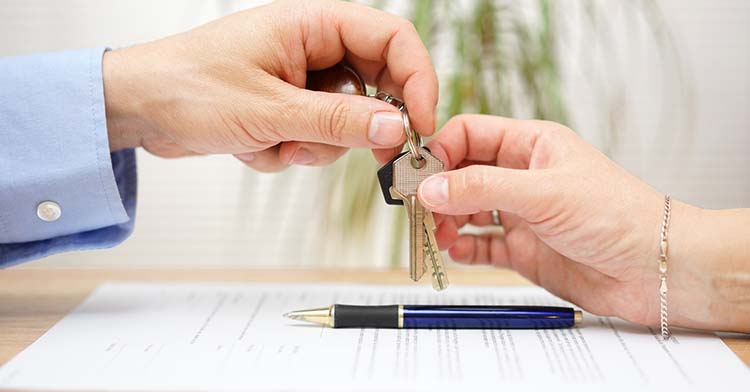
A 1031 exchange is a tool that investors can use to defer the payment of capital gains taxes if they sell a real estate asset and reinvest the proceeds. Although long-term capital gains tax rates are significantly lower than the rates levied on ordinary income and short-term gains, the tax can reduce profits by up to 20 percent.
Early use of the tactic involved a simultaneous exchange of property, not involving cash. For example, one investor might have farmland by a water source and trade that piece for other acreage closer to a grazing source. In 1935 the Board of Tax Appeals validated using cash from selling one property to buy a replacement. Still, it stipulated that such a transaction required using a Qualified Intermediary to ensure that the investor did not have access to the proceeds during the interim.
The ruling maintained the requirement that both assets be “like-kind” properties. This requirement previously meant that parties could not exchange dissimilar assets, such as swapping jewelry for artworks or land for royalty rights. However, the 2017 Tax Cuts and Jobs Act limited the application of the 1031 exchange to real estate held for investment and expressly excluded other property types.
Four Types of 1031 Exchange
The four ways to execute a 1031 exchange are:
- Delayed Exchange
- Reverse Exchange
- Simultaneous Exchange
- Improvement Exchange
In each case, the replacement property (or properties) must have a market value equal to or greater than the value of the relinquished property. This requirement also applies to any debt that the property carries. The difference is taxable if the original property sales price is higher than the total acquisition value of the replacement assets.
Delayed Exchange
The delayed exchange is the most common means of deferral and relies on the oversight of the Qualified Intermediary to maintain the proceeds in a separate fund out of reach of the investor. As this type of transaction increased following its validation by a 1979 court ruling, Congress added deadlines to the 1031 process.
The clock starts ticking when the investor sells the targeted property. They then have 45 days to formally identify potential replacement properties and complete the transaction within 180 days from the start. The Qualified Intermediary receives the identification and safeguards the funds. That individual also maintains all appropriate paperwork and manages reporting.
Reverse Exchange
The investor identifies the targeted replacement property with a reverse exchange before selling the original asset. In this scenario, the investor must not purchase the targeted property since they can’t own both simultaneously. Instead, the investor directs the Qualified Intermediary to buy and hold the replacement property until they can sell the property designated for disposition. Like delayed exchanges, the reverse exchange is also constrained by the 45 and 180 days deadlines.
Simultaneous Exchange
As mentioned, 1031 exchanges were originally a simultaneous exchange of actual assets between two investors. That rarely, if ever, takes place today. However, in some cases, the investor could complete both the disposition and acquisition on the same day. It’s important to note that even a simultaneous exchange needs to be managed by a Qualified Intermediary to preclude the investor from accessing the proceeds from the relinquished property sale.
Improvement Exchange
Improvement Exchanges are also uncommon, partly due to the complexity and risk of failure. For example, an investor might attempt an improvement exchange if they want to buy an identified property, but it requires improvements to raise the value to that of the relinquished asset.
In this case, the QI owns the replacement property and directs the improvements, paying for them from the proceeds of the relinquished property sale if necessary. The improvements must be completed within 180 days of the execution of the sale transaction, and the replacement property must remain substantially the same as before the work was done. In addition, once the improvements are completed, the value must equal or exceed that of the relinquished property.
Although 1031 exchanges are complex and challenging, the successful execution of the transaction can significantly benefit an investor. The investor can reinvest the entire proceeds from selling their property, which enhances the potential for further appreciation. In addition, using the exchange also allows the taxpayer to defer any applicable depreciation recapture.
Finally, it’s helpful to note that investors can conduct sequential 1031 exchanges. If, at any time, the investor sells a property in the execution chain without completing a new exchange, all accrued taxes would be due. However, if instead they ultimately distribute the final replacement property to an heir, that person or entity receives the property at the stepped-up value, eliminating the deferred tax obligation.
This material is for general information and educational purposes only. Information is based on data gathered from what we believe are reliable sources. It is not guaranteed as to accuracy, does not purport to be complete and is not intended to be used as a primary basis for investment decisions. It should also not be construed as advice meeting the particular investment needs of any investor.
Realized does not provide tax or legal advice. This material is not a substitute for seeking the advice of a qualified professional for your individual situation.
Costs associated with a 1031 transaction may impact investor's returns and may outweigh the tax benefits. An unfavorable tax ruling may cancel deferral of capital gains and result in immediate tax liabilities.
Hypothetical examples shown are for illustrative purposes only.



